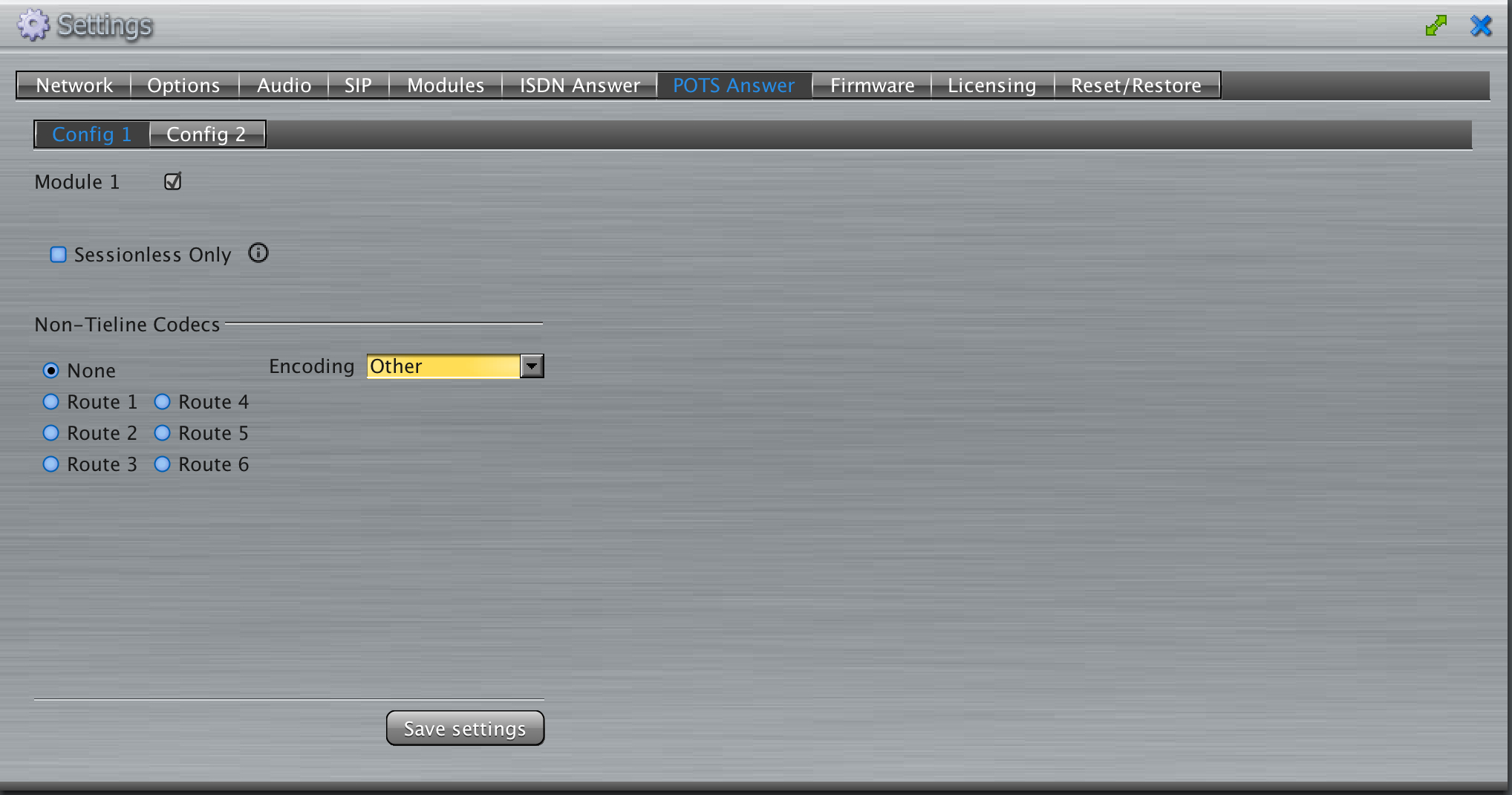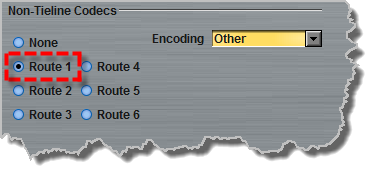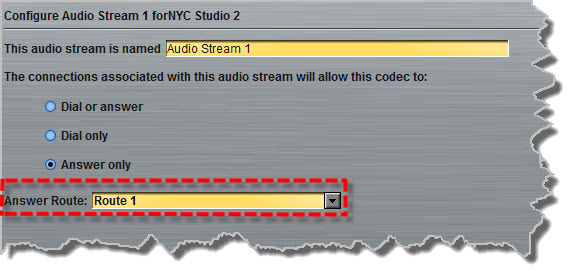Configuring POTS Answering
It is possible to store a different POTS Answer Config for each POTS module installed in the codec. POTS answering can be configured to suit:
•The type of call being made, e.g. Tieline (with Tieline Session Data) versus non-Tieline (Sessionless).
•Expected dialing behaviors and encoding, e.g. whether audio streams use Route tags and which algorithm is used.
If you answer a call from a non-Tieline codec you will need to create an answering "Config" to determine which module in the codec will answer the call and the settings used when connecting.
|
Important Notes: •POTS Answer Config settings are applied to POTS Codec connections and not Analog Phone connections. •When receiving a call from a Tieline codec with session data enabled (i.e. not Sessionless), the algorithm setting from the dialing codec overrides the setting in the POTS Answer Config menu. |
POTS Config Settings
The default POTS Answer module Config settings are:
•Tieline Codecs Session Data,
•The Other algorithm.
This configuration will accept the settings from an incoming Tieline codec when it dials with session data enabled. It will also allow the codec to answer a call from a Comrex POTS codec supporting the Other algorithm setting.

Answering Calls from Non-Tieline POTS Codecs
Select the Sessionless Only check-box when only non-Tieline codecs are dialing a Tieline codec over POTS. This allows you to choose the default encoding setting and Route the incoming call to a nominated audio stream via a corresponding Answer Route in the answering codec program if required.
|
Important Note: Select Other in the Encoding drop-down menu when connecting to Comrex® Vector, Matrix® and BlueBox® codecs. On the Comrex codec select its "Music" algorithm. Please note that 9.6kbps connections are not supported by the Comrex codecs. |
Dial and Answer Route Settings in Programs
Dial Route and Answer Route tags allow you to associate a POTS Config with a particular incoming audio stream from either Tieline or non-Tieline codecs.

In principle, this operates similarly to how audio ports are used to route multiple audio streams over IP. Selecting different IP audio port numbers allows users to define which incoming IP audio stream is routed to a specific answering audio stream configuration on the codec. This ensures inbound calls from multiple codecs can be consistently routed to the same answering audio streams, and therefore the same inputs and outputs.
This is not necessary in simple point-to-point POTS audio stream configurations, however it is very useful in multiple audio stream codecs which support POTS connections. When dialing Tieline to Tieline over POTS using the Merlin or Genie family of codecs, you can configure a Dial Route in the dialing codec's program and a corresponding Answer Route in the answering codec's program. This will ensure a particular audio stream is routed between two codecs consistently.

Answer Routes for Non-Tieline POTS Codecs
In some situations you may receive a call from a non-Tieline POTS codec which doesn't support Dial Route tags. In this situation you can still specify the audio stream Route on the answering codec using Config 1 or 2 in POTS Answer. You can also select the default algorithm.
For example, if a call from a non-Tieline codec is received via POTS Module 1 (i.e. no Dial Route has been specified in the dialing codec):
1.Select an answering Route for this POTS module in one of the two Configs within POTS Answer, e.g. Route1, then select the default Encoding algorithm to use when connecting (Note: Other is used for connecting to Comrex POTS codecs).

2.Click Save Settings to store the new Config settings.
3.This will associate the incoming call with a corresponding Answer Route configured in the answering codec program, e.g. Answer Route 1.

